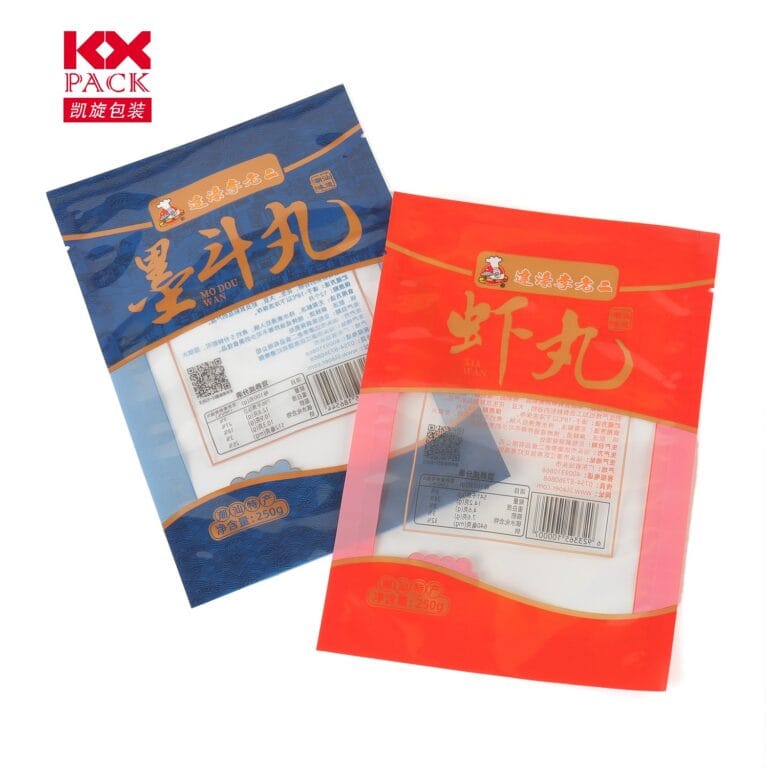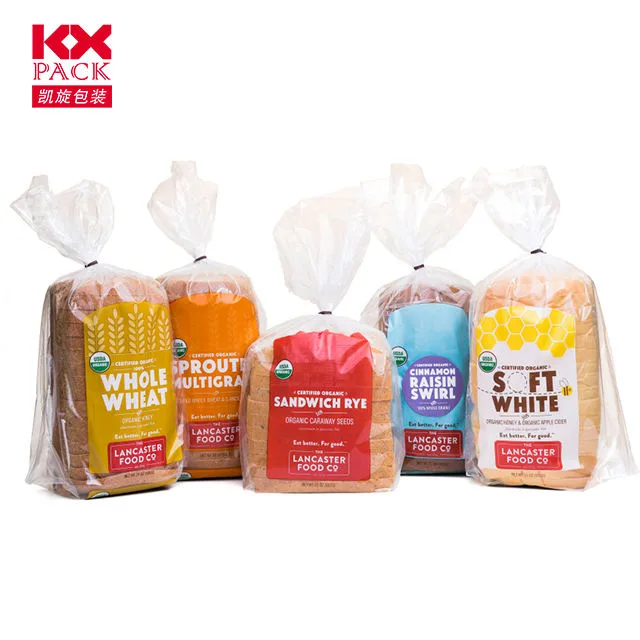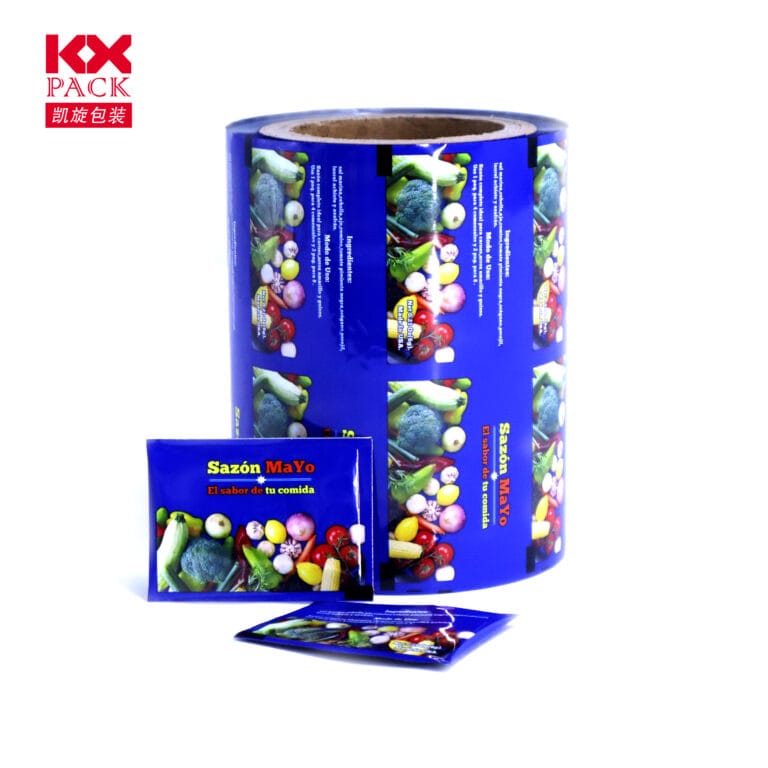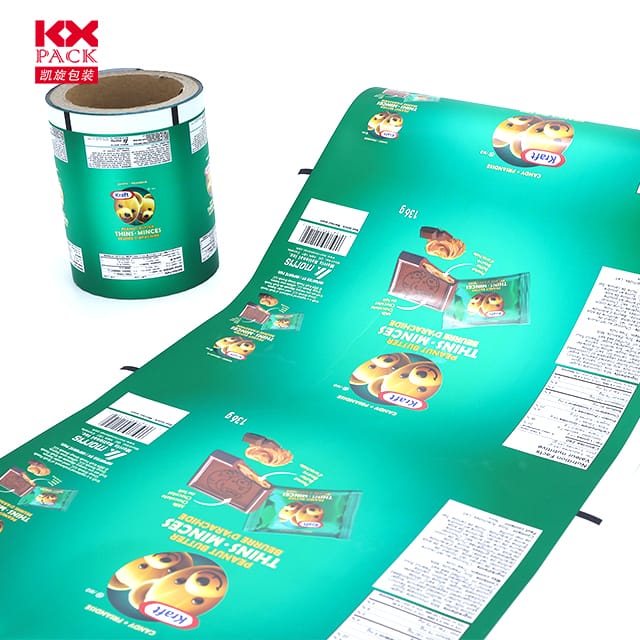Kebangkitan pembungkusan filem yang fleksibel: Inovasi, Kelestarian, dan transformasi industri
Pembungkusan filem fleksibel
In the dynamic world of packaging, flexible films packaging telah muncul sebagai penukar permainan, membentuk semula industri dari makanan dan farmaseutikal ke penjagaan peribadi dan logistik. Ditakrifkan oleh ringan, boleh disesuaikan, dan bahan berprestasi tinggi, flexible packaging now accounts for a significant share of the global market—estimated at$270.96 bilion dalam 2023 and projected to grow at aCAGR of 4.8% through 2030. This surge is driven by its ability to meet evolving consumer demands, Tekanan pengawalseliaan, dan matlamat kemampanan. Let’s explore why flexible films are becoming the packaging solution of choice.
1. Key Properties: Why Flexible Films Stand Out
Pembungkusan filem fleksibel are engineered to balance functionality and efficiency. Their defining features include:
- Lightweight and Portable: Tidak seperti pembungkusan tegar (Mis., kaca atau logam), flexible films reduce material use and transportation costs. A single truckload of flexible films can carry the equivalent of 10 truckloads of glass jars, slashing carbon emissions.
- Barrier Protection: Advanced multilayer structures—combining polymers like polyethylene (PE), polipropilena (Bopp), atau polyvinyl chloride (PVC) with aluminum foil—create impermeable barriers against oxygen, lembapan, dan cahaya. This extends shelf life for perishables like meat and cheese by up to 50% compared to traditional packaging.
- Rintangan Suhu: Flexible films withstand extreme conditions, from oven-safe pouches for ready-to-eat meals to freezer-grade films for frozen foods.
- Penyesuaian: Films can be tailored to product shapes, minimizing waste and maximizing product-to-package ratios. This precision is critical for single-serve snacks, pet treats, and pharmaceutical blisters.
2. Aplikasi industri: From Food to Pharmaceuticals
Pembungkusan filem fleksibel have disrupted multiple sectors by offering cost-effective, high-performance solutions:
- Makanan & Minuman: The largest market segment, flexible films dominate snack packaging, fresh produce wraps, and microwaveable meals. Sebagai contoh, stand-up pouches with resealable zippers reduce food waste by keeping contents fresher longer.
- Pet Food: Innovations like lightweight treat packs and bulk sacks with odor-barrier layers cater to pet owners’ demands for convenience and freshness.
- Healthcare & Pharmacy: Sterile, tamper-evident blister packs and peelable pouches ensure drug safety and compliance with strict regulatory standards.
- Logistics & E-dagang: Tahan lama, puncture-resistant films protect goods during shipping, while shrink-wrap films secure pallets for efficient transportation.
3. Kelestarian: The Driving Force Behind Adoption
Sebagai kebimbangan alam sekitar gunung, flexible films are evolving to meet circular economy goals:
- Reduced Carbon Footprint: Manufacturing Pembungkusan filem fleksibel requires 60% less energy than rigid alternatives like glass. Their lightweight nature also cuts fuel consumption during shipping.
- Recyclable and Compostable Options: Innovations like mono-material PE films and plant-based compostable films (Mis., NATIVIA® by Taghleef Industries) mendapat daya tarikan. Some brands now use 100% recycled content in their films.
- Waste Reduction: Pembungkusan filem fleksibel generate 80% less landfill waste than rigid packaging due to their efficient material use.
Namun begitu, cabaran kekal. Filem pelbagai lapisan, while high-performing, are often non-recyclable. Industry leaders are investing inKitar semula kimia danadvanced sorting technologies to address this gap.
4. Future Trends: What’s Next for Flexible Films?
The market is poised for transformative growth, didorong oleh:
- Pembungkusan Pintar: Integration of IoT sensors to monitor freshness or QR codes for supply chain transparency.
- Advanced Adhesives and Substrates: New laminations improve barrier properties without adding thickness, enabling thinner, stronger films.
- Pematuhan Peraturan: Stricter eco-laws (Mis., Arahan Plastik Single-Gunakan EU) are pushing brands to adopt sustainable films.
- Kemudahan pengguna: Boleh ditutup semula, easy-open, and single-dose designs cater to on-the-go lifestyles.
Kesimpulan: Flexible Films as the Future of Packaging
Flexible films packaging is no longer just an alternative—it’s a necessity for brands aiming to stay competitive in a fast-paced, eco-conscious market. By combining innovation, Kemampanan, and versatility, these materials are redefining how products are protected, dibentangkan, and preserved. Sebagai kemajuan teknologi, expect flexible films to become even smarter, lebih hijau, and more integral to global supply chains.
Ready to embrace the future of packaging? Sama ada anda pemilik jenama, manufacturer, atau pengguna, the shift to flexible films is a win for efficiency, Kemampanan, and the bottom line.
Sumber: Flexible Packaging Association, AMI Plastics, Taghleef Industries, Market Research Reports (2023–2030)






